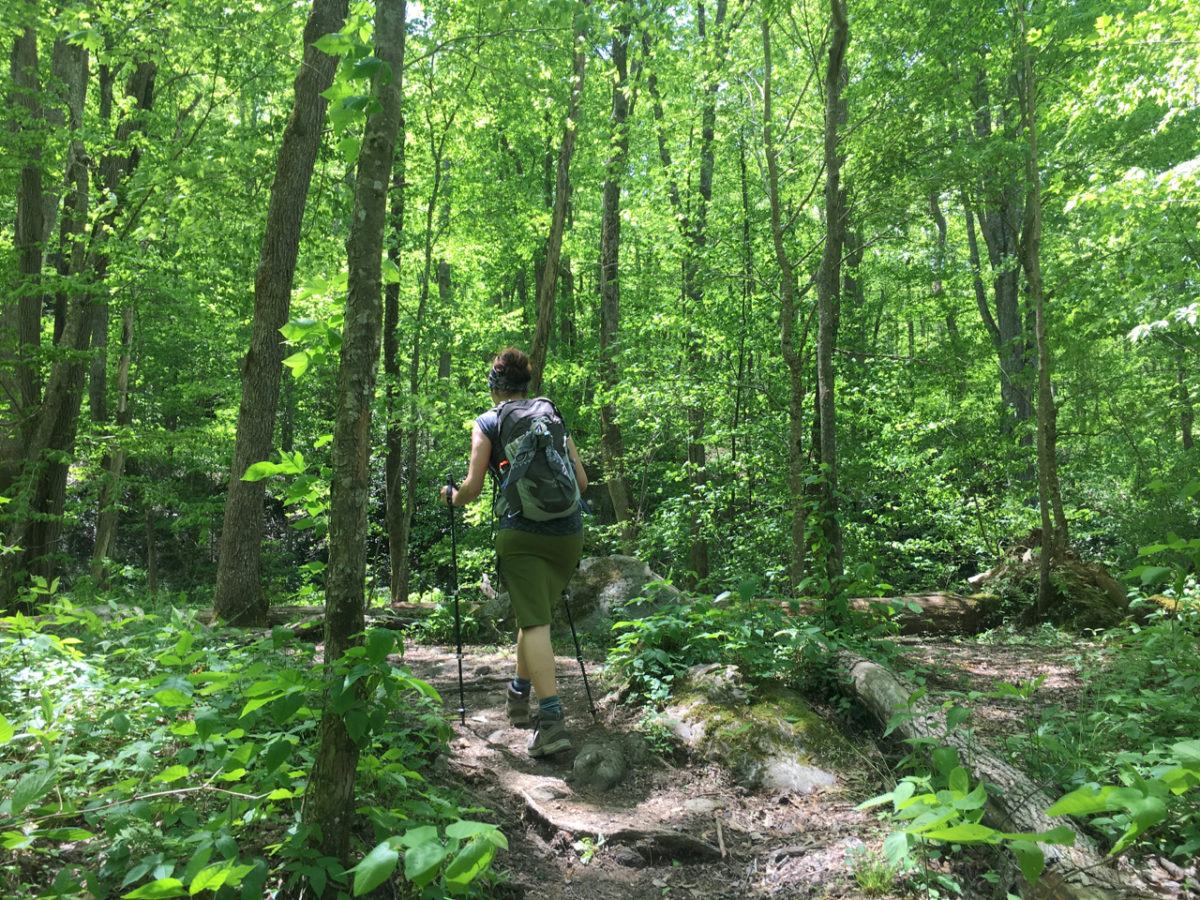In 2013, I wrote a piece for Women You Should Know about what it was like to live with scoliosis. That piece was syndicated by the Huffington Post, and to this day I still get emails from young girls and women who are dealing with the same issues and wrestling through the same complicated emotions. Five years have passed since I sat down to write that piece, and I often think about it. Has anything changed? Am I in a better place than I was when I wrote those things? At this point, the only thing that has changed are the methods I try to alleviate muscle pain. I am not in a better place pain-wise. I’d say it’s about the same, possibly worse now.
I am still figuring out how to manage daily pain. As I sit here writing this, I am repeatedly adjusting my posture to try and find a pain-free position that will relieve the familiar QL muscle twinge that sometimes turns into a flash of breath-stealing sharpness. I stopped going to chiropractors because I found they were only concerned with adjusting me even though I repeatedly complained of pain during adjustments. One chiropractor I went to said it was inevitable that I would have arthritis and hopefully the adjustments would help. The last time I left his office I was in intense pain which ended up being a muscle strain that required 6 weeks of physical therapy, which was actually a blessing in disguise. Out of everything I’ve tried over the years, physical therapy was the most helpful, and still is as I learn new strengthening exercises. I’m also taking CBD oil to see if that will lessen the daily aches and pains, but I can only take it at night because it makes me really tired. While it does seem to help, by the time I wake up in the morning, I’m already feeling the muscles spasm again. I’ll give it some more time though.
As a hiker, there is no better place for me to find escape from the stresses of life than in the woods. Hiking has added benefits for my body because it is a hip and glute strengthening endeavor. Many people with scoliosis are told they need to work on having a stronger core, hips, and glutes because those muscles assist with lifting, along with the way the body is postured and carried. Even when I neglect the exercises at home, my body feels better when I am moving through the woods, climbing a hill on my own steam.
There are several women’s hiking groups that I follow on Facebook, and I’ve seen questions pop up a few times over the years about how women with scoliosis adjust a backpack. Seeing these questions is so encouraging to me because it makes me feel like less of an aberration in the outdoor space. There are people like me out there. While I like to think the outdoors is a welcoming community for everyone, sometimes it can be an unforgiving arena for people who are different in terms of ethnicity, gender, body type, affording a certain caliber of gear, or physically handling a certain amount of exertion, etc. Throughout the years though, there have been many stories of people breaking through those barriers. More recently, companies and online communities are working to expand the boundaries of the outdoor space. REI’s Force of Nature campaign, Jenny Bruso and Unlikely Hikers, GirlTrek, and She Explores just to name a few, plus numerous Facebook groups curated for people from many different walks of life who want to get outside and find community there.
FINDING GEAR WHEN YOUR BACK HURTS
I absolutely love gear. If someone told me I could be a gear tester for an outdoor company and make a living at it, I would probably quit my job right now and never look back. As it stands, the only gear I’ve tested has been on my own dime. What I’ve noticed in experimenting with different types of shoes, backpacks, socks, tents, sleeping pads, stoves, pillows, and clothing is that gear is an intensely individual and personal decision. What works for some might not work for others, and that’s fine, because there is so much on the market now that offers a vast array of choices for people who are serious about getting outside. For women dealing with scoliosis we have options!
Here are a few of the tips, tricks, and items I’ve found that go a long way in helping me stay comfortable when I’m outdoors…
BACKPACKS
Whether you’re a day hiker or a hardcore backpacker, one of the most important pieces of gear you will carry is your backpack. I have tried on so many packs…soooo many packs, and I can tell you that no perfect one exists. Some feel too heavy, too bulky, too unstable, some don’t have hip pockets, others have too many useless pockets, some weigh too much, others weigh too little, some straps dig into your shoulders, some hip pads chafe and leave pack sores…on and on. The curvature in my spine is a backwards “S” which means that the hip and shoulder on my right side are higher than my left. What I do to compensate for this is adjust the shoulder harness so that it is a little crooked with the right strap being higher. This subtle change of just an inch makes a big difference in how the pack carries on my back. On my backpacking pack, there is no adjustable harness, but the straps are soft and fall exactly where they need to on each shoulder.
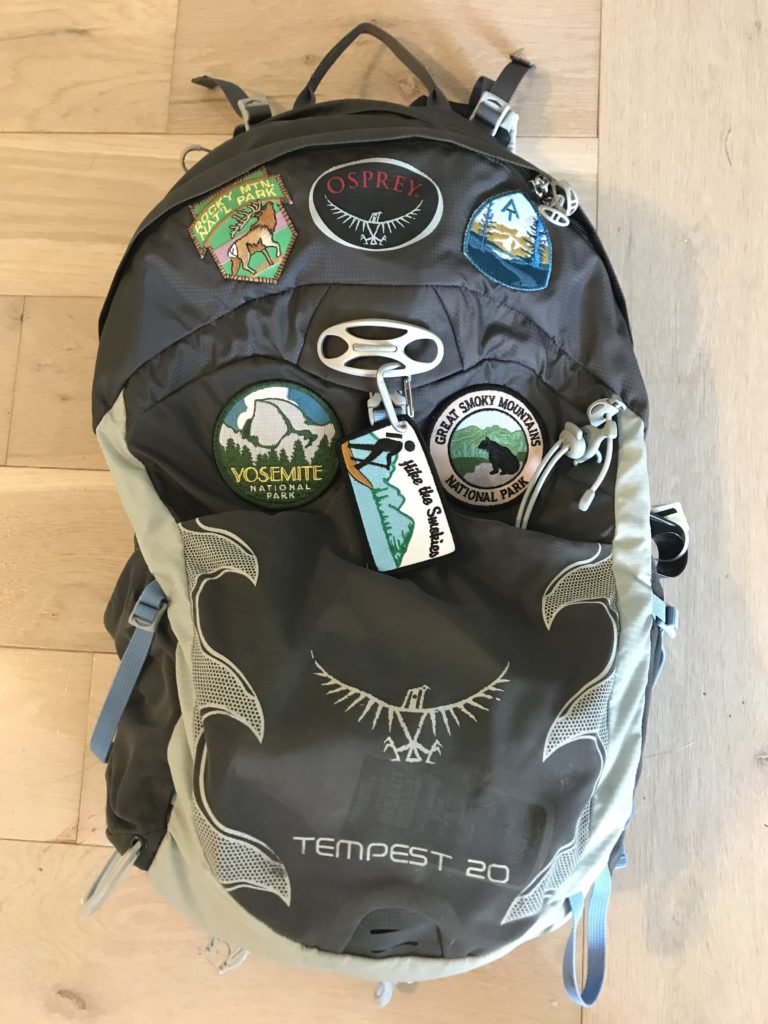
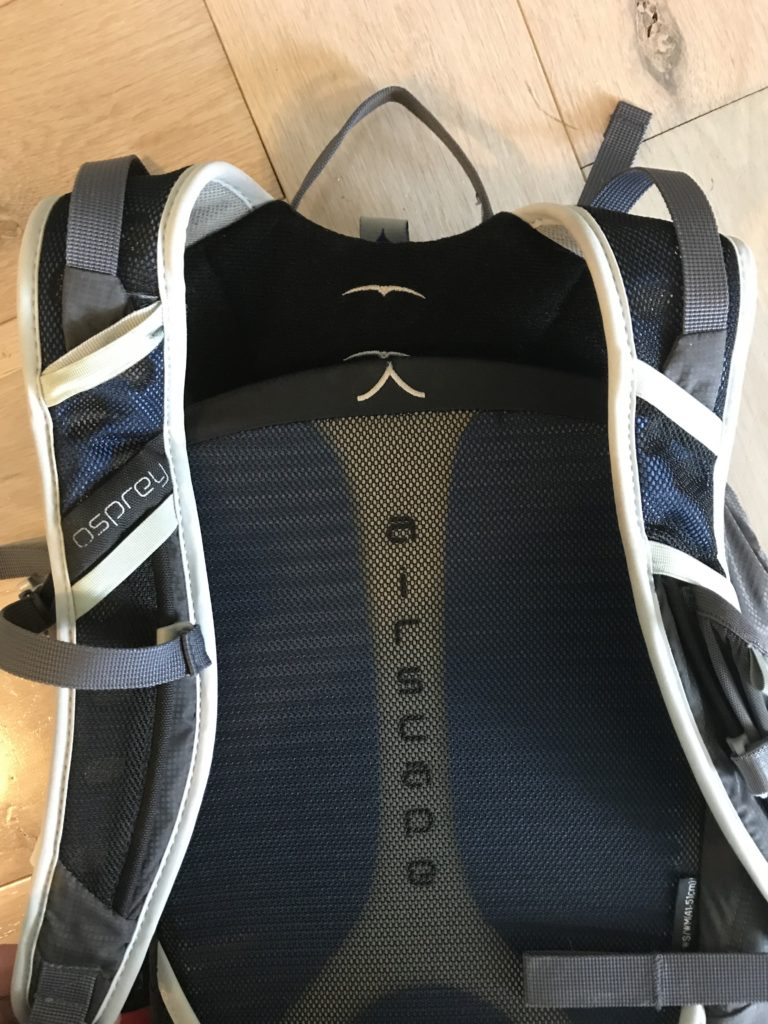
For a backpacking pack, the best thing to do is go to an outfitter like REI who can fit you properly for a pack, and try on every single option they have in the store. Every pack feels different when loaded with 20+ pounds of gear, and feels even more different once you’re on trail gaining 2000 feet of elevation. Backpacking packs have various kinds of support and frames in them. There are certain brands where the supports dig into the wrong part of my back, others have weaker frames and the load seems to rest in the wrong place. It is all incredibly specific to body type with many opinions floating around out there. The only way you will know is to be properly fitted.
I finally had a breakthrough when I tried Gossamer Gear’s Mariposa pack. Backpacks with frames that elevate the pack off the back for airflow often make me feel off balance. Since I’m a small framed woman, having a pack that carries a load well and doesn’t leave me feeling I’m going to tip over is a must. The Mariposa feels like a big hug. The padding and cushioning are superior to any other backpacks that I tried, and after taking this pack on several trips, I’m more convinced than ever that there isn’t another pack that can possibly feel as comfortable. There is an internal, removable frame that does a superior job at carrying loads under 35 lbs. I carried 25 lbs and there were times I forgot I was wearing a pack. The shoulder straps rubbed against my neck a bit, but as the pack shifted, that went away. I used a pack liner and an umbrella during nonstop rain on one of my trips. The umbrella did end up dripping water onto the front mesh pocket, but a pack liner can be added there as well if you need to keep other items dry. The ample side pockets drained well. They also provide great storage and organization for a tent, snacks, first aid kit, water bottles, and any other on the go essentials. I also love that this pack comes from an independent company and is manufactured in the US. For me, it was a win!
Whatever you do, don’t let anyone else influence your decision on how a pack should feel. If it’s comfortable for you, that is what matters most. If it feels “off” and someone’s saying that’s how it should fit, keep trying until you find the right one. Brands to explore* include Osprey, Gregory, Deuter, REI, ULA, Gossamer Gear, ZPacks, and Superior Wilderness Designs. Just know that heavier packs with a more substantial frame will carry the load better than some ultralight packs. You really need to try them on to feel the differences and how they affect your body, and over the long haul, your back.
TREKKING POLES
I absolutely adore my Leki Legacy Ultralight trekking poles and can’t say enough good things about them. They have saved me from embarrassing spills and ankle twisting falls more times than I care to admit. The poles also assist as extra leverage when walking up a mountain, and sturdy support when descending. They take a lot of pressure off my knees, softening the impact of my boots on the ground, which means my back is jolted a whole lot less. I use these all the time and can’t imagine doing any kind of long distance trip without them. There are lots of options when it comes to trekking poles (aka hiking sticks). Some vary in locking mechanisms, collapse in different ways, and have handles composed of cork or foam. A fancy name brand is not necessary, but if possible I would suggest finding a pair that weighs no more than a pound. Brands to explore* are Leki, Black Diamond, REI, and Gossamer Gear. Amazon also has many budget options available, but keep in mind that you get what you pay for when it comes to certain types of gear.
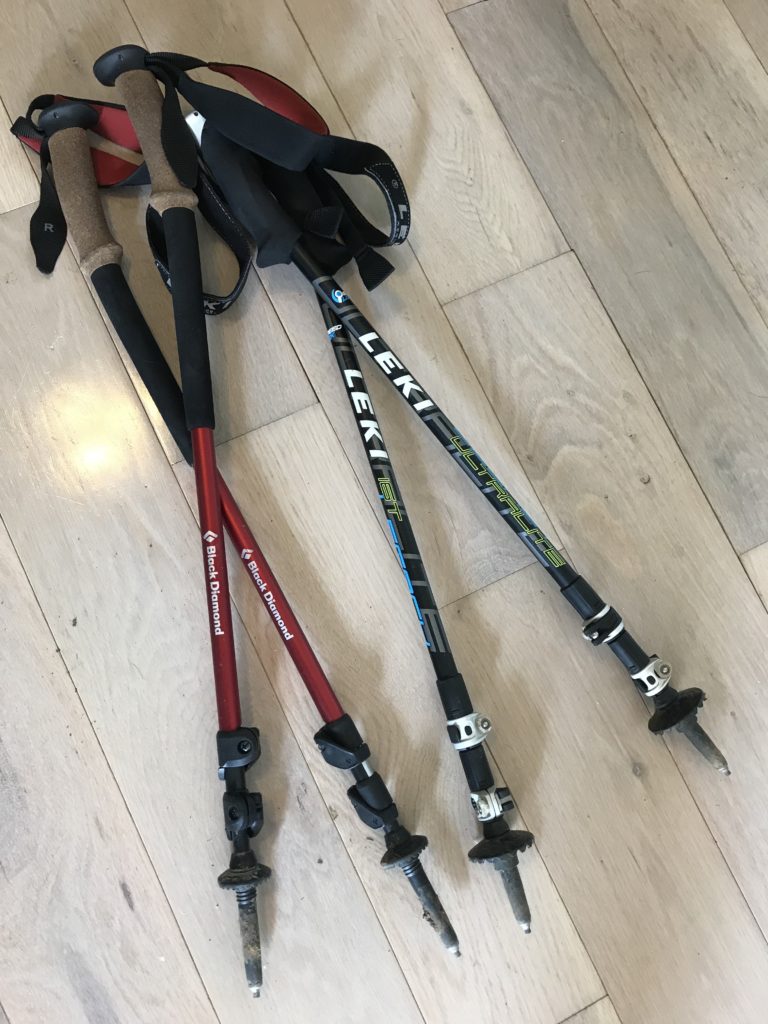
HIKING BOOTS vs. TRAIL RUNNERS
The age old argument of boots versus trail runners rages on in online forums where people feel very passionately about one or the other. I think it depends on the trail and I use both. The footwear you choose will go a long way in determining how your back feels at the end of a hike and the support of a hiking boot is not to be underestimated. This is another item that really comes down to personal preference, and thanks to REI’s understanding employees and generous return policy, I was finally able to find footwear that worked for me without giving me blisters or killing my body on long descents, which are so much harder on me than ascents. For longer hikes in the mountains I usually wear my Vasque Breeze III hiking boots. When I was in Scotland earlier this year doing some shorter hikes, I wore the Vasque Mesa Trek Ultradry boots and my feet stayed dry in rainy weather and on boggy hill walks. For trails, around town, and summertime rainy weather, I opt for Brooks Caldera or Salomon X Mission 3 trail runners.
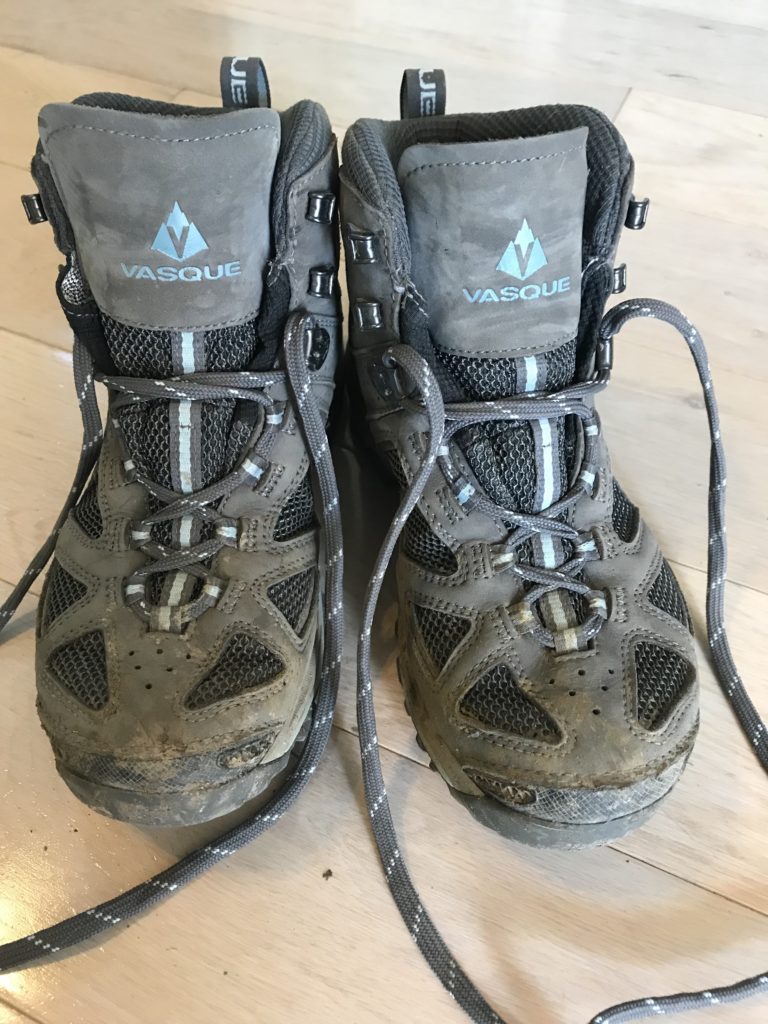
I find with the hiking boots that I have really good support, which in turn makes my knees and back ache less throughout the day. On the flip side, the trail runners are really cushioned and weigh less per foot, thereby putting less pressure on the back with each step. If I had to pick and was told I could only hike in one for the rest of my life, I honestly don’t know which I’d choose. With scoliosis, I know what my body can and can’t handle, the support it needs, how the downhill feels in a boot and a trail runner. Boots give me more stability, but trail runners enable me to go light and fast. There are so many options to choose from, and this is another case for spending some time at an outfitter so you can try ALL the shoes. Brands to explore* include Vasque, Merrel, Danner, Ahnu, Salomon, Keen, Lowa, Brooks, Altra, Hoka One One, and La Sportiva.
SLEEPING PADS
This is maybe the toughest choice of gear for someone with scoliosis because what I sleep on directly affects how I feel in the morning, and spinal alignment at night can go a long way toward comfort the next day. I prefer a decent amount of cushion which makes inflatable pads a great option, especially for backpacking. I’m also a side sleeper and finding a good inflatable pad was a lot easier on my hips than some of the thinner options out there like closed cell foam. The firmness can be adjusted with inflation or deflation, and there are many choices now that weigh less than a pound. I use the Klymit Ultralight V, which I purchased on Massdrop. The pad weighs 15.5 oz, has a 4.4 R rating, and provides a comfortable night’s sleep in summer and when temps are low. This is one of the least expensive sleeping pads at $59.99 that doesn’t weigh a ton while being insulated. What I like about the Klymit pads is that the baffles keep them from feeling “pool rafty.” This again, is personal preference and testing these on trail is a huge part of figuring out what will work best for your back. Brands to explore* include, Klymit, Big Agnes, and Thermarest .
Which sleep system to choose is a big decision. Some people prefer pillows, others decide the extra weight isn’t worth it and prefer to use a backpack or extra clothing as a pillow. Sleeping bags don’t help with spine alignment, but the proper amount of warmth in cold weather keeps muscles from tensing all night which in turn allows for greater range of motion when getting up in the morning.

There is rarely a time when purchasing a piece of gear that I don’t consider how it affects my back in some way. Every ounce adds up to a pound. Those pounds end up in a pack on my back. How far or how easily I’m able to travel depends on the weight I carry and how comfortable that weight is to handle. Scoliosis shouldn’t be a barrier to living a life outdoors. There are adjustments that need to be made, tweaks to gear, even exercises that need to be done for strengthening…but it is possible. The feeling that I have after accomplishing a tough trail and ending up at a spectacular view is pure exhilaration. It’s a reminder to me that many times if I think I can’t do something it’s because I’m standing in my own way. Sometimes, even through pain and struggle, our own abilities can surprise us.

*I am affiliated with none of the brands mentioned in this post and will not receive any kind of revenue for links clicked.

